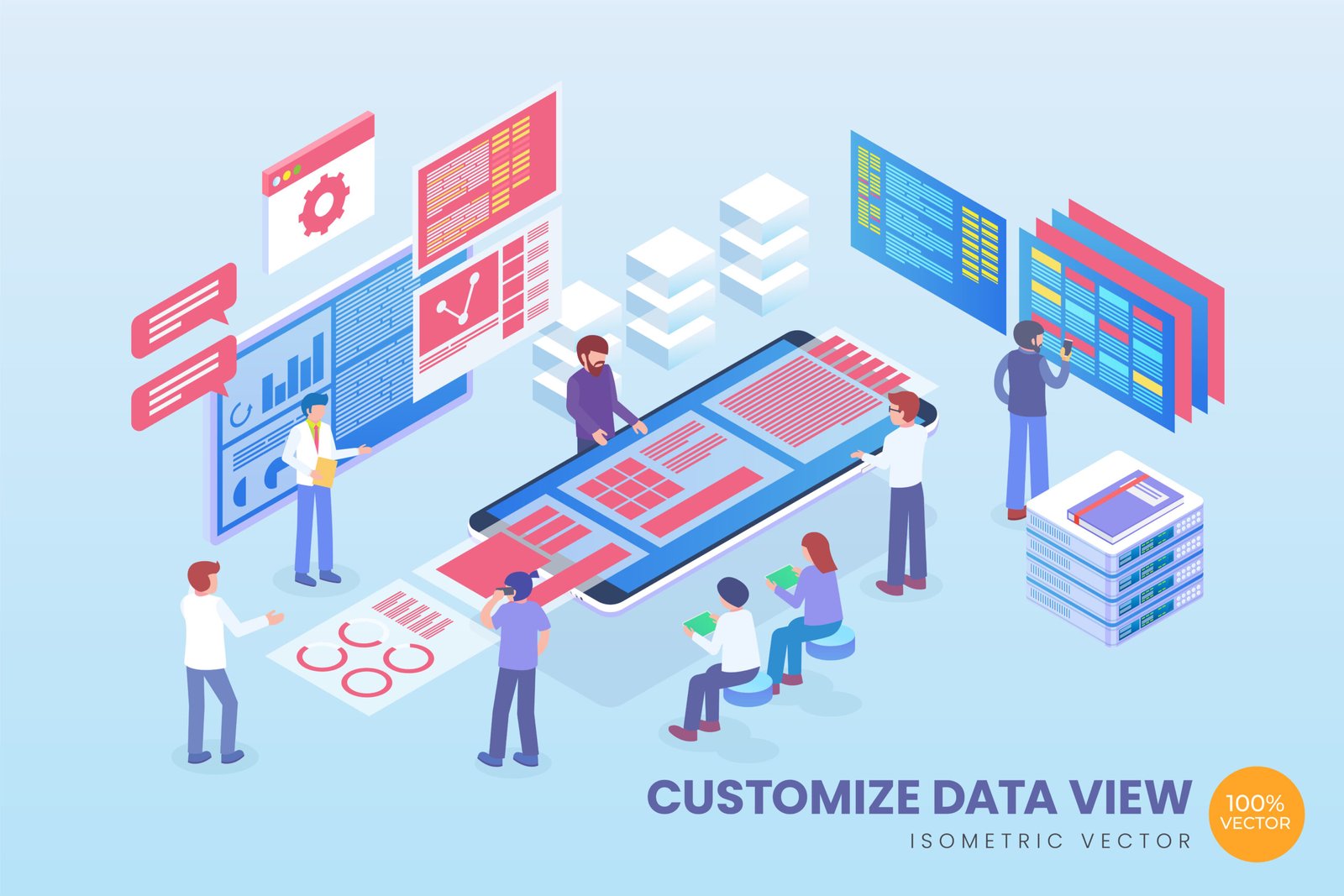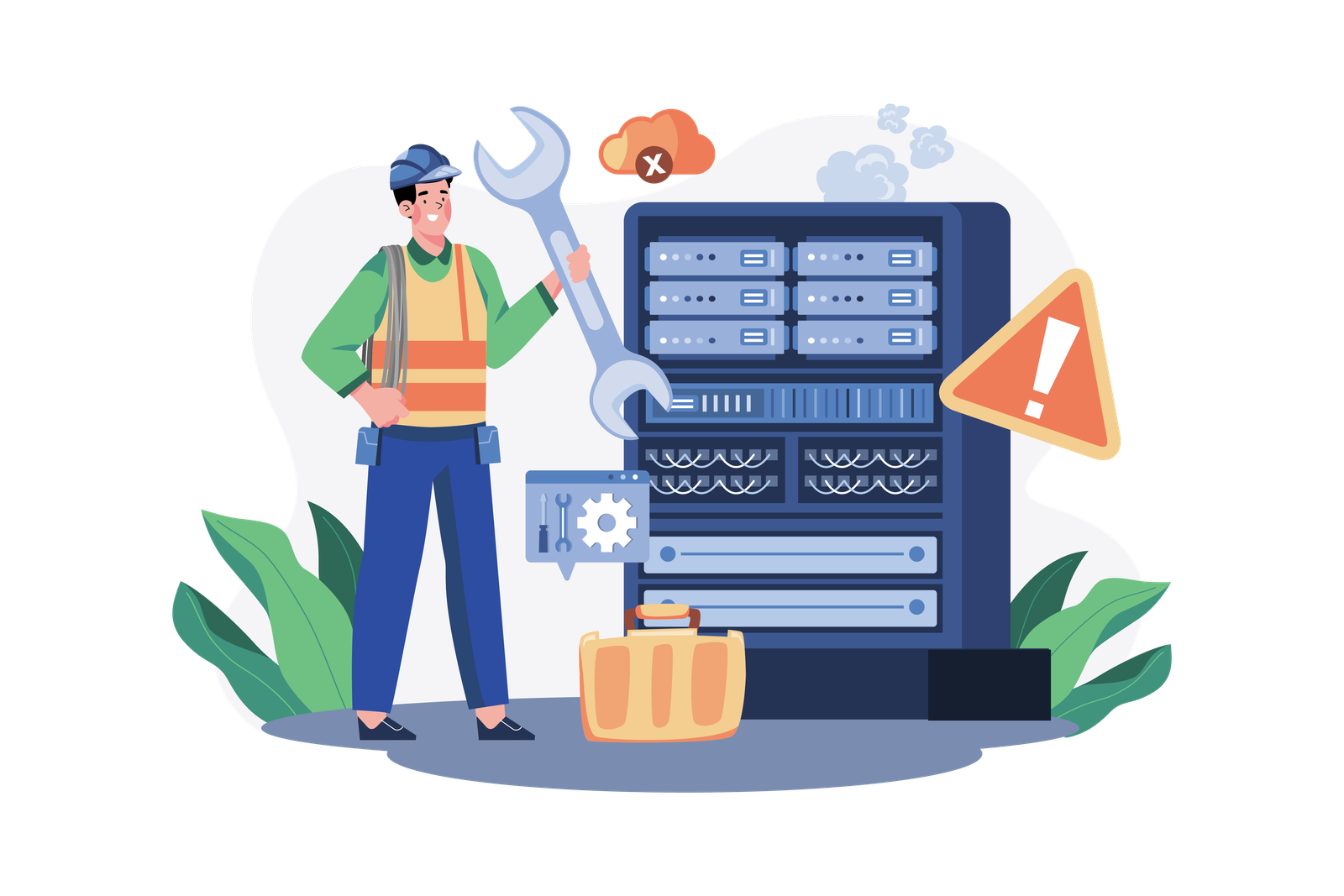Your app isn’t just an idea — it’s the bridge between your goals and your audience. It’s how you solve real problems, grow your business, and make an impact.

We will analyze your requirements to determine the objective of your app/web app
We map out the workflow and list all the features of your desired app/web application
We prepare a mockup to demonstrate how your app/web app would work
We will validate the functionality of the app/web app with you and list any further changes that you may need
According to the requirements of your app and the state of the art, we will select the frontend, backend, and database tech stack to be used for your framework
We will build the final version of the app including frontend, backend and database to validate the prototype
We will deploy the web app / app on your website / store, and do various checkpoints to ensure about the quality of the result
We specialize in creating web applications that do more than function—they connect you with more customers and drive your business growth. Our web app development solutions focus on creating a smooth, intuitive experience for your users, making it easier to turn visitors into conversions. By adding features tailored to your audience, we create apps that make your business stand out and build popularity within your target market
With smartphones now the go-to source for information over desktops, we design responsive web apps with a mobile-first approach. Our mobile app developers craft UI components to align perfectly with mobile device features, ensuring the app seamlessly adapts to any screen size.
We improve your web app’s performance by simplifying the registration process with social media integration. This lets users log in quickly through their favorite social media accounts, boosting engagement, interaction, and increasing your brand’s visibility.
We integrate live chat features and can even develop custom AI-powered chatbots for your web app to handle customer issues quickly and efficiently. This not only enhances your app’s functionality but also helps build stronger, more valuable customer relationships.
Adding push notifications is an excellent way to keep your customers engaged. A well-designed notification system allows you to send relevant updates, keep users connected to your web app in real-time, and encourage them to return—ultimately boosting customer retention.
Based on your web app’s needs, we can integrate payment gateways to ensure fast and hassle-free payment processing. This makes it easy for your customers to pay directly through the app’s native UI. Whether it’s EMIs, wallets, or debit/credit cards, we can incorporate all popular payment methods.
An analytics dashboard boosts your web app’s efficiency by helping you track key performance metrics in real time. It provides a clear, visual representation of your app’s data, making it easy to review insights at a glance and take informed actions to improve performance.
React.js remains the most widely used frontend library for building modern web applications. Created by Facebook, it is perfect for developing dynamic and interactive UIs for apps of all sizes. Its component-based architecture and vast ecosystem of tools make it a top choice. Why it’s a top choice: -Great for building high-performance single-page applications (SPAs). -Huge community support and a wide range of pre-built libraries. -SEO-friendly when paired with server-side rendering using tools like Next.js.
Angular is a powerful frontend framework developed by Google. It's a comprehensive, full-featured solution for large-scale, enterprise-level applications that need complex functionality and long-term scalability. Why it’s a top choice: -Built-in tools for single-page applications - Robust two-way data binding. -Ideal for enterprise-level projects requiring modularity and scalability. -Provides a strong set of out-of-the-box features like dependency injection, forms, and routing.
Next.js, built on top of React, has quickly become the leader for server-side rendered (SSR) web applications. It’s widely used for SEO-friendly web apps and websites that need fast initial loading times and dynamic content delivery. Why it’s a top choice: - Perfect for SEO-focused web apps and e-commerce websites. - Supports both static site generation (SSG) and server-side rendering (SSR) for better performance. - Comes with built-in tools for routing, image optimization, and API integration.
1. Python with Django Django, built with Python, is a powerful framework for fast and secure backend development. It provides pre-built tools like authentication, admin panels, and database handling, making it ideal for creating robust apps quickly. Key benefits: Fast development with built-in components. Highly secure, protecting against common vulnerabilities. Scalable for high-traffic apps like Instagram. Best for: E-commerce, social networks, and data-driven web apps
Node.js, combined with Express.js, is a fast, lightweight choice for real-time and scalable backend systems. It allows developers to use JavaScript for both frontend and backend, making it efficient for modern apps. Key benefits: Handles real-time features like chats and live updates. Non-blocking architecture for high performance. Large ecosystem via npm for reusable libraries. Best for: Real-time apps, APIs, and microservices.
Laravel modernizes PHP with tools for routing, authentication, and database management. Its clean syntax and pre-built features make it beginner-friendly and cost-efficient. Key benefits: Simple to use with built-in tools like email and caching. Scalable for growing businesses. Strong community support and resources. Best for: Blogs, e-commerce, and SaaS apps.
PostgreSQL is a powerful open-source relational database known for its reliability, scalability, and flexibility. It supports structured data and is widely used in applications that require complex queries and data integrity. Key benefits: Handles complex queries and relationships with ease. Highly scalable, suitable for large-scale applications. Strong data integrity with ACID compliance (ensures accuracy). Best for: Enterprise-level apps, financial systems, analytics platforms, and apps requiring complex data relationships.
MongoDB is a popular NoSQL database designed for flexibility and scalability. Instead of tables, it stores data in JSON-like documents, making it perfect for unstructured or rapidly changing data. Key benefits: Flexible schema design for evolving app needs. Handles high-traffic apps with horizontal scaling. Ideal for working with unstructured or semi-structured data. Best for: Real-time apps, content management systems (CMS), and apps requiring high scalability, like e-commerce platforms.
MySQL is a widely used relational database known for its speed, ease of use, and support for structured data. It has been a go-to choice for developers for decades and is highly compatible with most backend frameworks. Key benefits: Fast and reliable for read-heavy applications. Easy to set up and maintain, with extensive documentation. Supports a variety of hosting options, from local servers to cloud platforms. Best for: Blogs, e-commerce platforms, and apps requiring structured data with moderate complexity.
When it comes to app development, selecting the right stack is crucial for performance, scalability, and user experience. Here are the top-performing tech stacks that we often use for for mobile app development, broken down into Native, Cross-Platform, and Backend for App Development categories.

If you're building apps specifically for iOS or Android, native development is the way to go. Native apps are built using platform-specific languages like Swift for iOS and Kotlin for Android, ensuring the best performance and user experience. Key benefits: Fully optimized for device hardware, ensuring better performance. Access to platform-specific features like camera, GPS, and notifications. Smooth, fast, and highly responsive user interfaces. Best for: High-performance apps like games, fintech apps, and apps requiring deep integration with device features (e.g., camera, GPS).

Cross-platform frameworks like Flutter (by Google) and React Native (by Meta/Facebook) allow developers to write a single codebase that works on both iOS and Android. This approach saves time and cost while still delivering native-like performance. Key benefits: Write once, deploy to both iOS and Android. Flutter offers rich widgets for beautiful UI; React Native excels with JavaScript-based flexibility. Faster development cycle and cost-effective for businesses. Best for: Startups, MVPs (minimum viable products), and apps that need to reach both platforms quickly.

The backend is the engine that powers your app’s logic, database, and server-side processes. Firebase (a Google product) and Node.js are two of the most popular choices for building scalable backends for mobile apps. Firebase: A serverless backend that provides tools like authentication, database, push notifications, and analytics—all in one platform. Node.js: A JavaScript-based backend runtime that’s highly scalable and great for real-time apps like chat or live tracking. Key benefits: Firebase simplifies development with built-in tools (e.g., Firestore for database, FCM for notifications). Node.js is fast, lightweight, and ideal for apps requiring real-time updates. Both are highly scalable and integrate well with frontend frameworks. Best for: Real-time apps (e.g., chats, live tracking), social media apps, and apps requiring quick deployment.
Choosing between building a mobile app or a web app depends on your business needs, audience, and the kind of user experience you want to provide. Here’s a clear comparison to help you decide:
A mobile app is downloaded and installed on a smartphone or tablet. It’s ideal when your goal is to provide a highly interactive, device-optimized experience or if you require access to specific hardware features like the camera, GPS, or push notifications.
When to Choose a Mobile App:
|
|
|
|
|
|
|
|
|
|
A web app runs in a web browser and doesn’t need to be downloaded or installed. It’s accessible across devices, making it a cost-effective and flexible solution for businesses aiming to reach a wider audience without the added complexity of app stores.
When to Choose a Web App:
The development timeline depends on the complexity of the project, features required, and the size of the development team. Simple apps: 2-3 months. Medium complexity apps: 4-6 months. Complex or enterprise-level apps: 6+ months. We work closely with you to define clear milestones and ensure timely delivery.
The cost varies depending on the scope of the project, the platform (iOS, Android, or web), and the features you need.
Simple apps: $10,000–$30,000.
Medium complexity apps: $30,000–$100,000.
Complex apps: $100,000+.
We offer flexible pricing models and work with you to deliver the best solution within your budget.
It depends on your business goals and target audience.
Choose a web app if you want broader accessibility, lower development costs, and easy maintenance. Choose a mobile app if you need high performance, native features (like GPS or camera), or offline capabilities. We can help you decide based on your specific business needs.
Yes, we offer post-launch support and maintenance services to ensure your app runs smoothly. This includes:
We follow industry-leading security practices to protect your app idea and data:
Sign NDAs (Non-Disclosure Agreements) to safeguard your intellectual property.
Use encrypted communication channels.
Store data securely on cloud-based servers with access controls.
Conduct regular security audits to ensure compliance.
Subscribe to get updates on our latest technology developments, including AI agents tailored to fit your business needs!